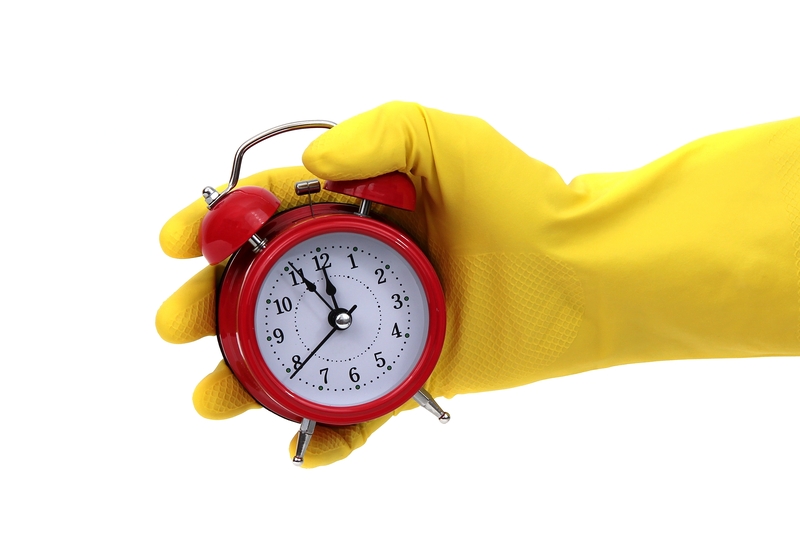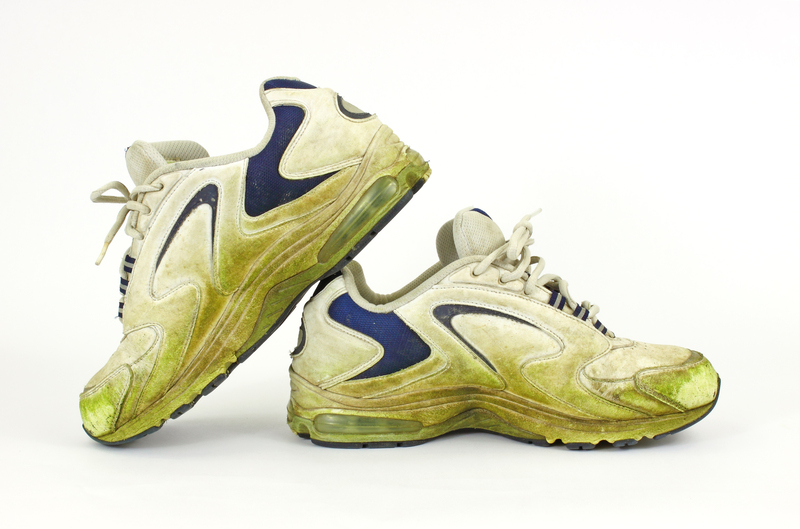Mastering the Art of Velvet Curtain Cleaning for Impeccable Results
Posted on 04/06/2025
Mastering the Art of Velvet Curtain Cleaning for Impeccable Results
Velvet curtains bring an unmistakable sense of luxury and sophistication to any room, casting an ambience of richness that few other fabrics can match. However, these beautiful drapes require careful maintenance to preserve their elegance and texture. Mastering the art of velvet curtain cleaning ensures your window treatments remain stunning, free from dust, and last for years. In this comprehensive guide, we explore insider tips, effective cleaning methods, and maintenance strategies so you can keep your velvet curtains in their best possible condition.
Understanding Velvet: The Fabric Behind the Finesse
Before diving into velvet curtain care, it's vital to understand what makes this fabric unique. Velvet is a woven tufted fabric in which the cut threads are evenly distributed, giving it a distinct soft pile or "nap." It can be made from silk, cotton, polyester, or a blend of fibres, each requiring a specific cleaning approach.
- Silk velvet: Luxurious but delicate, best handled by professionals.
- Cotton velvet: Durable but can shrink; needs gentle cleaning.
- Polyester/Blend velvet: Active-friendly and more resilient; often easier for DIY cleaning.
The pile easily traps dust, debris, and even moisture, which can lead to fading, odor, or damage if cleaned improperly. Therefore, velvet curtain cleaning is as much an art as it is a science.

Why Proper Cleaning of Velvet Curtains Matters
Many homeowners underestimate the importance of regular velvet curtain care. Dirty, dust-laden velvet not only looks dull, but also contributes to allergies and indoor air pollutants. A meticulous approach to cleaning velvet drapes will:
- Preserve the lush appearance and deep colors of your curtains
- Remove accumulated dust, allergens, and unpleasant odors
- Enhance the longevity of the fabric
- Maintain the soft, plush texture of the velvet pile
Let's uncover the best practices for cleaning velvet curtains - whether for routine maintenance or deep cleaning.
The Basics: Routine Velvet Curtain Maintenance
Regular Dusting and Vacuuming
The first step to velvet drape care is preventing dust buildup. Dust regularly by following these steps:
- Use a soft brush attachment on your vacuum cleaner. Gently glide it along the direction of the nap to lift dust effectively without crushing the fibers.
- If you don't have a vacuum, use a lint roller or a soft clothes brush. Lightly sweep down the curtain in consistent strokes.
- Dust both sides of the curtain, as airborne particles settle everywhere.
Aim to vacuum velvet curtains weekly, especially if your home is in a dusty area, or if you have pets.
Spot Cleaning Small Stains
Accidents and stains are inevitable - but prompt action is essential for successful velvet curtain stain removal.
- Blot (don't rub) the spill gently with a clean, dry white cloth to absorb as much liquid as possible.
- For solid stains, use a dull knife or spoon to lift away residue before blotting.
- Mix a solution of mild dish soap and cool water. Dampen a clean cloth with the solution and dab (don't soak) the affected area.
- Follow up with another damp cloth to remove soap residue, then blot dry.
- Allow the velvet to air dry naturally. Avoid direct heat sources like hairdryers, as they can flatten the nap.
Remember: Always test any cleaning solution on a hidden part of the curtain first to prevent discoloration or damage.
Deep Cleaning Velvet Curtains: A Step-by-Step Guide
Over time, velvet curtains require more than simple dusting. Deep cleaning velvet drapery is a sensitive process -- and it's crucial to know whether your specific curtains can be washed at home, or if they require professional treatment.
Check the Fabric Label
The care label on your curtains provides crucial information. Look for cleaning instructions such as:
- Dry-clean only: Always send these to a specialist.
- Hand-wash or machine-washable: Proceed with extreme care, especially the first time.
How to Hand-Wash Velvet Curtains
- Fill a large basin or bathtub with cold water and a small amount of gentle detergent designed for delicates.
- Submerge the curtain and gently agitate with your hands. Do not rub or wring the fabric to preserve the nap.
- Drain the soapy water and refill with cool, clean water. Swish the curtain until all soap is removed.
- Press out water gently, supporting the fabric's weight. Do not twist.
- Lay flat on towels or hang on a padded hanger to air dry. Avoid direct sunlight, which can cause fading.
Machine Washing Velvet Curtains: Is It Safe?
While some modern synthetic velvets can withstand machine washing, always use the lowest spin, delicate cycle, and cold water settings, and place curtains in a mesh laundry bag. Skip the spin cycle if possible, to prevent crushing the pile. Never tumble dry: air drying is mandatory.
Professional Dry Cleaning
If your curtains are labeled dry-clean only or are valuable, antique, or made from silk, professional velvet curtain cleaning is the safest option. Make sure to inform your cleaner about the fabric type, lining, and any embellishments.
- Dry cleaning uses specialized solvents instead of water to safely clean and refresh velvet.
- Professional cleaners can restore the nap and luster lost over time.
- Always inspect cleaned curtains before bringing them home.
Caring for the Nap: Restoring Velvet's Plush Texture
After cleaning, velvet sometimes appears flattened or marked. Proper care is essential to revive the signature soft, plush nap. Here's how to restore velvet curtain pile:
- Steaming: Use a handheld garment steamer on the reverse side of the fabric, holding it a few inches from the surface. Gently brush the nap upward with a soft clothes brush while steaming.
- Brushing: Once dry, always use a special velvet brush or a soft-bristled brush to gently lift the pile.
- Professional pressing: For stubborn flattening, consult a specialist in velvet restoration.
*Avoid ironing velvet curtain panels directly--high heat and pressure can permanently crush the fabric's pile.*
Preventing Damage for Lasting Beauty
Proper velvet curtain maintenance means practicing prevention as much as cleaning.
- Hang curtains away from direct sunlight. UV rays can fade colors and weaken fabric fibers. Consider adding a protective liner.
- Avoid over-handling or pulling. Opening and closing velvet drapes gently preserves the nap and overall structure.
- Dust window frames and sills regularly to reduce buildup on the curtains.
- If you must wash your velvet drapes, always remove rings, hooks, and weights before cleaning.
Frequently Asked Questions About Velvet Curtain Cleaning
Can I Clean Velvet Curtains Myself?
For light cleaning, yes--regular vacuuming and spot cleaning work well for most polyester or cotton blends. However, silk velvet curtains or heavily soiled and lined panels should be entrusted to professional dry cleaners for best results.
How Often Should Velvet Drapes Be Cleaned?
Aim for weekly dusting and vacuuming, with a deeper clean every six to twelve months, depending on environmental factors and household conditions.
Are Home Cleaning Products Safe for Velvet?
Only use mild, non-bleaching soaps and always spot-test first. Harsh chemicals or bleach can permanently harm velvet fabric. When in doubt, check with the manufacturer or a professional.
What's the Best Way to Prevent Water Spots?
Use as little water as possible when spot cleaning. Blot rather than rub, and allow to air dry. If water spots appear, a light steaming and brushing usually restore the nap and even out appearance.
DIY Velvet Curtain Cleaning Hacks
For readers who love simple home solutions, these tips can further enhance your curtain care:
- DIY Deodorizer: Mix equal parts baking soda and cornstarch, sprinkle lightly onto dry curtains, leave for 1-2 hours, then vacuum gently.
- Quick Refresh: Hang velvet drapes outdoors on a dry, breezy day for a couple of hours -- but avoid strong sunshine.
- Removing Pet Hair: Dampen a rubber glove and run it over the curtain to lift hair and lint before vacuuming.
- Homemade Velvet Brush: Wrap a soft cotton cloth around a new sponge brush to lift dust and nap.

When to Replace Your Velvet Curtains
With proper cleaning and care, velvet curtains can last for many years. However, it's time to consider replacement if:
- The fabric is excessively faded, torn, or threadbare.
- Persistent odors remain after deep cleaning.
- Mildew or mold has penetrated the fabric beyond the lining.
If you love the look of velvet, explore modern, washable velvets which are easier to keep clean while offering the same lush appearance.
Conclusion: Velvet Curtain Care for Lasting Luxury
Mastering the art of velvet curtain cleaning means more than a cursory dusting -- it's an investment in your home's aesthetic, air quality, and comfort. By understanding your curtain's fabric, using proper cleaning techniques, and instituting regular maintenance practices, you can enjoy the timeless beauty of velvet drapes for years to come.
Whether you choose professional care or prefer DIY methods, the secret lies in gentle handling, using the right tools, and respecting the unique character of this plush textile. With these comprehensive tips and tricks for velvet curtain cleaning, your windows will always be dressed to impress.
Ready to Revolutionize Your Curtain Care?
Share your own velvet curtain cleaning tips or experiences in the comments below! Looking for more decor advice? Explore our related articles on curtain styles, home textile care, and luxury living.






